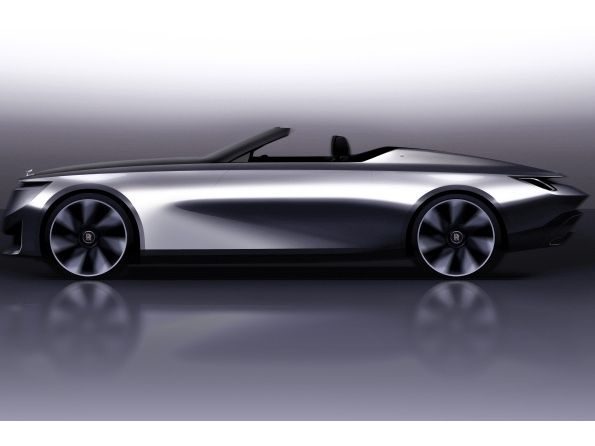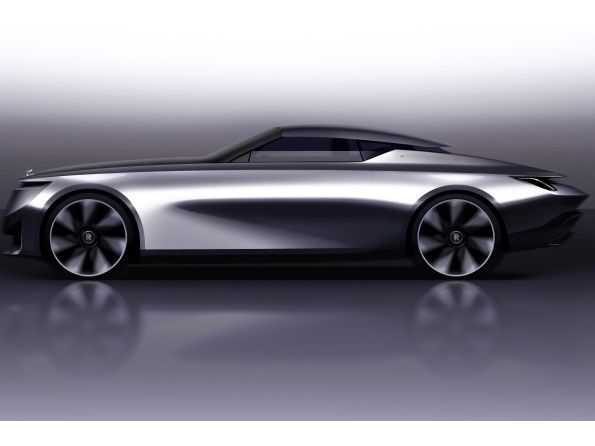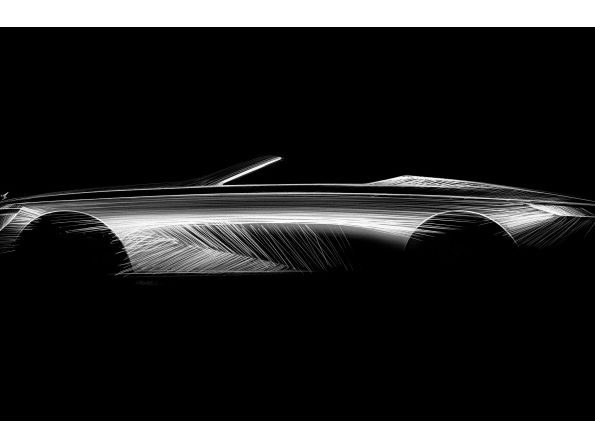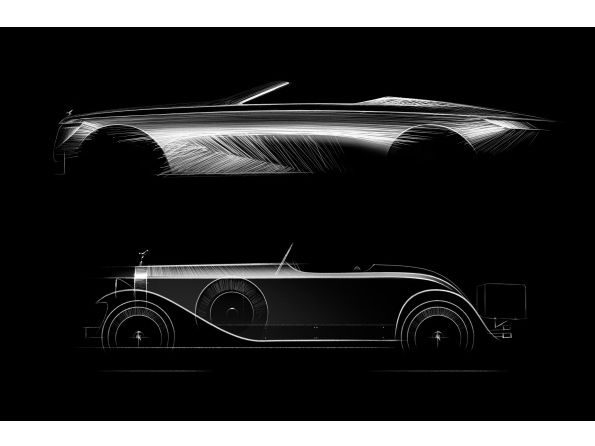Categories more
- Adventures (17)
- Arts / Collectables (15)
- Automotive (37)
- Aviation (11)
- Bath, Body, & Health (77)
- Children (6)
- Cigars / Spirits (32)
- Cuisine (16)
- Design/Architecture (22)
- Electronics (13)
- Entertainment (4)
- Event Planning (5)
- Fashion (46)
- Finance (9)
- Gifts / Misc (6)
- Home Decor (45)
- Jewelry (41)
- Pets (3)
- Philanthropy (1)
- Real Estate (16)
- Services (23)
- Sports / Golf (14)
- Vacation / Travel (60)
- Watches / Pens (15)
- Wines / Vines (24)
- Yachting / Boating (17)
Published
09/10/2023 by Rolls-Royce Motor Cars“Today, Rolls-Royce Motor Cars unveils Droptail, an exquisite coachbuilt motor car that resets our understanding of what is possible in the luxury sector. Indeed, our dedicated Coachbuild department is the only place in the world where true patrons of luxury can create a motor car not for their image, but in their image. These extraordinary products are roadgoing expressions of applied art, built from the ground up over more than four years in collaboration with a small constellation of our most ambitious clients. These individuals join our designers, engineers and craftspeople at every stage of their masterpiece’s development. The result of this partnership is an historic motor car that is as fundamentally unique as its owner that will enter Rolls-Royce history as a testament to the shared ambition of our brand and its clients. Droptail also answers a long-standing question – can a car be created as art? With the unveiling of this extraordinary roadster, the answer is, unequivocally, yes.”
Torsten Müller-Ötvös, Chief Executive Officer, Rolls-Royce Motor Cars
“Within Rolls-Royce design, the Coachbuild department is a place without limitation, where the most ambitious ideas can be expressed and a forward-looking vision of what is possible can be realised. The nature of Coachbuild gives us the latitude to go beyond our existing design strategy and explore bold, new and highly focussed creative avenues. These motor cars represent the dreams of our clients and capture a specific moment in time, while also projecting a bold and timeless interpretation of the Rolls-Royce brand. Yet Droptail, the most involved, progressive and refined Coachbuild to date, is not a concept car or a design study – it is a motor car that has been built to be driven.
Anders Warming, Design Director, Rolls-Royce Motor Cars
“Motivated by the significance of shaping the world’s only contemporary Rolls-Royce roadster, we felt liberated to re-examine the fundamental tenets of Rolls-Royce design. For the first time in our history, the iconic Pantheon grille has been significantly reshaped, setting the tone for a highly progressive design treatment: Droptail is a celebration of reduction and focus of purpose that is entirely in tune with contemporary codes of luxury. Like every coachbuilt Rolls-Royce, Droptail expresses a deeply personal reflection of each of its commissioning clients’ sensibilities, which it was my great privilege to explore with them over many years. The result is a landmark statement reflecting an unprecedented era of confidence, clarity and precision within Rolls-Royce design."
Alex Innes, Head of Coachbuild Design, Rolls-Royce Motor Cars
ROLLS-ROYCE COACHBUILD: APPLIED ART
As a House of Luxury, Rolls-Royce Motor Cars constantly seeks to create personal and deeply meaningful luxury products that reflect the marque’s clients’ ambitions and personal codes of luxury. Rolls-Royce’s unparalleled Bespoke capabilities enable clients to bring these desires to life through the commission of beautiful, handcrafted and truly individual Rolls-Royce motor cars.
A small group of exceptional individuals wish to elevate this remarkable, deeply personal experience even further and move beyond the canvas of existing Rolls-Royce products. These highly ambitious and discerning clients seek the opportunity to work directly with the marque’s designers, engineers and craftspeople to create completely unique Rolls-Royce motor cars beyond the brand’s product portfolio, participating in every stage of their development. This is Rolls-Royce Coachbuild.
Creatives within Rolls-Royce Coachbuild approach the motor car as an elevated expression of applied art – the discipline of creating something beautiful, intellectually stimulating and emotionally resonant, that has a clear and single purpose.
The renaissance of contemporary coachbuilding began in 2017 with ‘Sweptail’, a bold two-door coupé created in response to a client’s wish to reprise the art of coachbuilding in partnership with Rolls-Royce. With its sharply tapering outline and full-length glass roof, it can be characterised as the Extrovert. It was followed by the unveiling of Boat Tail in 2021, a highly social open-top that amplified its clients’ love of hosting – a motor car that unashamedly represents the Hedonist.
Today, Rolls-Royce is proud to present Droptail: the third chapter in a remarkable story that reflects the absolute pinnacle of the Rolls-Royce brand, and by extension the super-luxury sector. For Droptail, the focus was placed on creating an intimate and cosseting interior, which would also serve as an unprecedented canvas for highly bespoke wood craft. Droptail captures the charm and embrace of two-seat motoring – it truly is the Romantic.
Only four expressions of this remarkable motor car will be created, each telling a unique and personal story that reflects the ambition, visions and taste patterns of its commissioning client – all of whom are significant collectors, patrons of the arts and business leaders.
RENAISSANCE OF THE ROADSTER BODY TYPE
Droptail represents the renaissance of the roadster body type, which breaks free from the four-seat convention previously associated with Rolls-Royce. In the first decades of the twentieth century, Rolls-Royce supplied rolling chassis to coachbuilders, who then added specially commissioned bodies. While European clients were drawn to grand, four-door, chauffeur-driven saloons, a young and bold generation of American clients were specifying two-door, two-seat roadster bodies. In doing so, these assertive and confident self-drivers disrupted the traditional, more formal codes of the brand.
Rolls-Royce Droptail is a highly contemporary projection of these values – a concept each commissioning client found deeply compelling. In capturing this spirit, Rolls-Royce Coachbuild designers studied the 1912 Rolls-Royce Silver Ghost ‘Sluggard’, the 1930 Rolls-Royce Phantom Brewster New York Roadster and the 1925 Rolls-Royce Silver Ghost Piccadilly. Like these motor cars, Droptail takes a highly distilled approach to design. Indeed, for Rolls-Royce’s creatives and artisans, simplicity and absolute clarity is the most challenging brief of all, but the most rewarding to behold.
DROPTAIL EXTERIOR: FOCUS AND INTENT
At 5.3 metres long and 2 metres wide, the exterior dimensions of Droptail recall the compact proportions of early Rolls-Royce roadsters. Yet, as the motor car’s progressive front end treatment clearly signals, this is not a retrospective pastiche of a classic Rolls-Royce. For Droptail, designers dared to introduce a new interpretation of the marque’s most precious iconography: the Pantheon grille and the Badge of Honour.
Ordinarily, the vanes of the marque’s Pantheon grille are straight and upright, but for Droptail – and for the first time in Rolls-Royce history – they are ‘kinked’ towards the top of the radiator, gently reclining to create a ‘temple brow’ overhang. This progressive treatment creates a more informal expression of Rolls-Royce design principles, using shadow to connect the two front headlamps visually. This strong horizontal graphic, bookended by deep-set daytime running lights, forms the motor car’s powerful brow line. Beneath, the grille falls to reveal relaxed, chamfered corners – another reference to the informal spirit of Droptail.
In profile, Droptail is radically unique in its proportions, which amplify the motor car’s driver-orientated configuration. This is characterised by a low and assertive stance, snug and enveloping cabin space and poised, taut surfacing. A dramatic negative body line is sculpted into the coachwork, falling from the front wheel and encouraging the eye to the rear of the motor car and to Droptail’s ‘sail cowls’, which denote that it is a strict two-seater. Named after their resemblance to a yacht’s jib, these sharp, angular forms rise behind the doors and curve gently inwards, subtly directing the eye to the motor car’s occupants.
Droptail’s sail cowls frame an extraordinary feat of engineering. The aft deck section, which sits between the occupants, performs an aerodynamic function in that it produces downforce to improve stability when the motor car is travelling at speed. Realising this while retaining Droptail’s signature ‘dropping’ rear end – a design style not ordinarily conducive to producing downforce without a peripheral ‘wing’ – was a considerable challenge. Indeed, the aft deck’s final form is the product of a deep collaboration between the marque’s designers and aerodynamicist and was resolved over a two-year period and 20 iterations.
This elegant innovation led Droptail’s commissioning clients to challenge the marque’s designers with ever more complex requests. On reviewing Droptail in profile, one client declared that nothing but the door handles, Spirit of Ecstasy and Rolls-Royce monogram should interrupt its monolithic surfaces. To fulfil this request, engineers developed a door handle that incorporates a hidden lock mechanism and a discreetly integrated indicator lamp. The design team’s reinterpretation of the Rolls-Royce ‘Badge of Honour’ is another testament to the freedoms within this department – it is distilled into a stainless steel ‘Double R’ monogram, which is placed on both sail cowls.
Rolls-Royce Droptail concludes with a rear treatment that evokes the roadster spirit but also references nautical design. The generous horizontal transom section uses the sky’s natural light to create an impression of width and solidity – a design feature inspired by racing sailing yachts of the thirties. The vertical rear lamps also cant forwards to signal the motor car’s dynamic intent. Underneath, the tall rear diffuser is finished with a semi-transparent lacquer, highlighting its raw carbon-fibre finish and providing a visual foundation that anchors Droptail to the road.
DROPTAIL ROOF: A SECOND CHARACTER
A removable hard top has been designed to give Droptail two very distinct characters: without its roof, Droptail is a lithe, open-top roadster; with the roof installed, it is a formidable and dramatic coupé. Droptail’s exceptionally low-slung profile and ‘postbox’ glasshouse is an intentional statement of attitude, partially inspired by ‘hot-rod’ and ‘Kustom’-style modified cars of the mid-twentieth century. These vehicles were unique in that sections of the metalwork between the roof and the main bodywork were removed – or ‘chopped’ – by hand in order to lower the roofline and create a bold and assertive aesthetic statement.
Rolls-Royce’s contemporary, high luxury expression of this attitude was considerably more complex. Droptail’s removable roof is made from carbon fibre to accommodate the dramatic curvature and crisp edging of its cantilevered design. Each client wished to use their motor car around the world in multiple climates. For this reason, the roof incorporates electrochromic glass that alters the amount of light entering the interior at the touch of a button. The electrical connection for the roof is channelled through the mounting points, allowing effortless installation and removal.
DROPTAIL INTERIOR: INNER CLARITY
Droptail celebrates the intimacy of a two-seat roadster with a cocooning interior, cosseting and protecting occupants with a high waist-rail and low seating position. Commissioning clients were particularly compelled by the notion of a highly focussed, minimalistic approach to the interior. In response to this, Rolls-Royce designers sketched a fascia that celebrated minimalism and analogue tactility. Just three primary buttons are visible, yet all of the functionality of a contemporary Rolls-Royce remains. The fascia alone took four years of development, testing and homologation.
This minimalist approach to the entire interior shape and form of Droptail was created to celebrate the discipline of woodcraft without interruption, thereby showcasing the exceptional craft skills of Rolls-Royce artisans. The generous surfaces and expressive sculpture carefully consider the orientation and specific placement of wood, highlighting its richness and striking natural beauty, purposefully catching light from multiple angles and recalling the organic forms of the most contemporary cabinetmakers.
The most prominent gesture within the cabin is the curved shawl panel; a vast, uninterrupted and intricately formed section of wood that wraps around the driver and their companion, evoking a sense of companionship and intimacy that is entirely in tune with the romantic character of this cocooning two-seater roadster.
A theatrical cantilevered plinth-like armrest between the two seats makes a bold signature statement with its uninterrupted, elliptical profile. At the touch of a button, the plinth glides backwards and forwards, allowing effortless access to the rotary information and entertainment system controller when required, then hiding it from view thereafter. Recalling the interior’s cosseting treatment, the plinth itself is embraced by inner seat bolsters finished in soft, supple leather.
Achieving the remarkable and unprecedented level of surface simplicity, which is such a vital part of Droptail’s presence and character, was the most challenging undertaking in Coachbuild history.
DROPTAIL ENGINEERING: FREEDOM THROUGH BESPOKE
Completely new underpinnings were developed for Rolls-Royce Droptail beyond the marque’s existing architecture. Reserved for Droptail’s exclusive use, this rigid monocoque is constructed from aluminium, steel and carbon fibre. Steel is used for the load-bearing front wing and door sections, but from the b-pillar rearwards carbon fibre is used, comprising three bonded sections. Lightweight and infinitely formable, carbon fibre enabled the bold compound curves of Droptail’s form to be realised. Indeed, the rear quarter panels are the largest carbon fibre panels ever created for a Rolls-Royce motor car.
In the spirit of the earliest coachbuilt Rolls-Royces, whereby a body was lowered onto a rolling chassis, Droptail’s exterior form is mounted on a contemporary Rolls-Royce drivetrain, ensuring a familiar experience to commissioning clients, all of whom are long-standing Rolls-Royce collectors. To reflect Droptail’s fleet visual character, the twin-turbocharged 6.6-litre V12 engine has been subtly enhanced to deliver an additional 30bhp and an elevated torque figure of 840Nm – the first time that engine power output has been increased for a Rolls-Royce Coachbuild project.
DROPTAIL: A SHARED LEGACY. A BOLD FUTURE
The focus and precision of Droptail’s execution represents the Coachbuild department’s most detailed and technically demanding undertaking to date. It also represents Coachbuild’s standing as the highest expression of applied art. Droptail’s bold reimagining of Rolls-Royce iconography, focus on simplicity and permanence as a monument to its owners represents both a new standard in the luxury sector and clear confirmation that coachbuilding will form a significant part of Rolls-Royce’s long-term strategy. Indeed, Droptail is a clear statement that the future of Rolls-Royce will be built in collaboration with its clients.


















